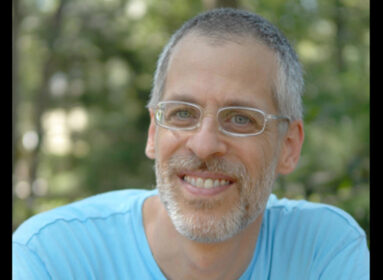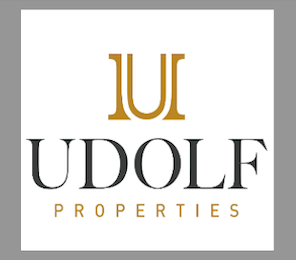An artist explores the mystery of the fish
By Cindy Mindell
A decade ago, a New York fishmonger reported to artist Max Missner Budovitch that a carp had spoken to him in Hebrew.
Since then, the fish has gradually worked its way into Budovitch’s paintings. A Chicago native and 2013 Yale graduate in philosophy, the artist has long been influenced by memories of a childhood spent in urban Chicago and on the shores of Lake Michigan. His paintings incorporate a love of fish, geology, and languages – he is a student of Arabic, Spanish, Hebrew and Yiddish – and are also inspired by the proliferation of iconic images in the news media.
Budovitch studied art both independently and at the Palette & Chisel Academy of Fine Arts in Chicago. His work has been shown in several Chicago galleries, privately commissioned, and publicly displayed. He has pursued his love of water as a recreational fisherman, professional oysterman and surfer.
Over the last five years, Budovitch has split his time between Chicago, New Haven, and Tel Aviv. His paintings are on exhibit through February at Congregation Beth El–Keser Israel (BEKI) in New Haven, where he will give an artist’s talk after services on Shabbat, Jan. 25.
Budovitch spoke with the Ledger about the influences behind his images.
Q: How did you go from the story of a talking carp to incorporating the fish in your work?
A: I first heard the story of the talking carp when it happened, in 2003, and it took years of percolation to resurface in my art. That said, I have been a fisherman all of my life and, growing up near Lake Michigan in Chicago, I had many years of almost daily exposure to fish and water and therefore the process of inspiration was seamless. I had always been interested in the carp’s unusually large eyes that look particularly human. I had always been interested in fish and found them mysterious and aesthetically beautiful, but the talking carp story opened up many additional possibilities for me: its main meaning for me at the time was that the world at large recognized to some degree the same qualities that I saw in fish, which encouraged my imagination.
The turning point came when I read Totem and Taboo by Freud, where he writes about how different groups value different totem animals. This relates to the concept of “taboo” because the totem animal is generally not to be touched or disturbed – a taboo surrounds the totem animal – until particular celebrations when the animal is ritualistically killed and eaten. Freud imagines the deep past in order to shed light on these odd phenomena – this is where he talks about the well-known primal murder of the father – and he relates ancient totems and taboos to more “evolved” behaviors such as drinking wine on Shabbat or at Communion — imbibing the blood of a forgotten, primordial murder or sacrifice.
This book solidified my thinking about the talking carp in particular and fish in general. I started to see the talking fish as fulfilling a universal need to place special, even supernatural, meaning in other animals; a way to address the mysteries of life.
I actually don’t see the carp as Jewish at all. For me, the carp embodies something more universal than Judaism. My carp may speak in Hebrew and Aramaic and Yiddish, but fish are just fish. The moment when the viewer thinks that the carp is Jewish is kind of a “Kafka-esque” moment when the normal suddenly becomes absurd – that is why some of the images are funny. The carp is just a fish, and everything Jewish or otherwise that we may attribute to it is our confused way of trying to bridge the mysterious barrier between ourselves and the fish or, for that matter, ourselves and anything else that we don’t understand in the universe.
Q: Have you explored and incorporated other “Jewish symbols” in this way?
A: I am currently working on a body of paintings portraying Chicago and Tel Aviv that are investigating place and time, concepts that I think are similar to the carp because they arise for me in a Jewish context but are perhaps even more relevant for non-Jewish themes in the world at large. Despite the incredible degree of Jewish assimilation in many countries around the world – most of all in the U.S. – Judaism carries an ever-present idea of migration and displacement. I feel very connected to Chicago and the U.S., but at the same time have always had an existential perspective that things could have turned out differently and elsewhere. This perspective helps me to see the world through an uncanny lens, which is the root of my inspiration.
In the short story, Cousins, Saul Bellow asks why so many Jews were among the founders of anthropology – Durkheim, Lévi-Strauss, Mauss, etc. – and muses that it was the uncanny contrast between the horrible banality of the shtetl and the heights of Judaism’s divine inspiration. While American Jews live a life far removed from the horrible reality of the shtetl, this same contrast between the banal present and the epic past that we learn as children remains preserved in communal memory. As familiar and homey as Chicago is for me, the existential perspective I described enters into my mind at every step. The city seems like an anomaly of brick and concrete at the edge of the lake that almost was never even built, or that my family almost never came to. This makes it endlessly interesting.
I often turn to Saul Bellow’s perspective, which incorporated both a great familiarity with Chicago and also an outsider’s uncanny worldview. In Herzog, he tells how, during the Second World War, his army buddies recognized his subtle foreignness and would quiz him, “What’s on the corner of State and Lake?” In one of his short stories, Bellow speaks to another character about Chicago, giving a wonderfully obtuse perspective: “Remember, this is the New World and we live in one of its mysterious cities.”
From this perspective, the power of time and place becomes tangible. I am trying to express them visually on the canvas using fish, clocks, geometric forms, and perspectives of Chicago, Tel Aviv, and the curvature of the Earth. Like the fish, these ideas originate in a Jewish context but quickly become much more universal.
Q: How do you use language(s) in your artwork?
A: I use languages as symbols for ideas and also for aesthetic appeal in an image. I do not usually focus on the meaning of the phrases themselves, but more about how Hebrew and other Semitic languages sprang from the dark depths of time. These ancient languages bridge a gap between the banality of everyday life and the great heights of the human mind and capability of expression. In some ways, language in my art is very much like the concept of the fish itself. In my most recent body of paintings about time and place that focus on Chicago and Tel Aviv, I sometimes use just several letters or numbers scattered about the canvas. This emphasizes that language for me is not primarily about forming sentences, but about where language comes from, what it means for us, and how it can help us imagine.
Artist’s talk with Max Missner Budovitch: Shabbat, Jan. 25, 12:30 p.m., BEKI, 85 Harrison St., New Haven. Artwork on exhibit through February. For information call (203) 389-2108 or visit HYPERLINK “http://www.beki.org” www.beki.org.








 Southern New England Jewish Ledger
Southern New England Jewish Ledger











